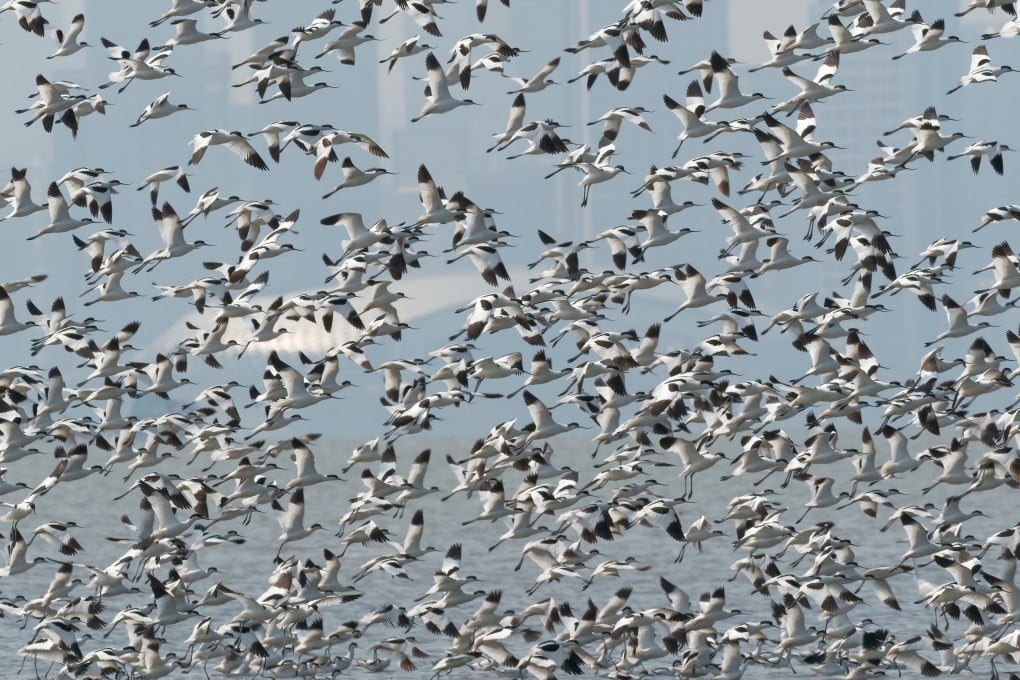How Hong Kong’s Mai Po wetlands are under threat again, and past battles the ‘bird paradise’ has faced
- A magnet for diverse species of birds, the Mai Po wetlands are a target of government plans to build part of an IT hub for its Northern Metropolis

As the tide rises on a winter’s day, thousands of waterbirds gather on the dwindling area of exposed mudflats. Flocks of sandpipers and other shorebirds, black-and-white avocets, egrets, herons and spoonbills. Gulls crowd the shoreline, beyond which parties of ducks throng the shallows.
The air rings with the birds’ piping and trilling, then, cries of alarm and a sudden rush of wing beats, as a peregrine falcon hurtles into their midst, scattering the flocks and leaving the flats briefly empty.
Even if you don’t have a special permit to visit this hide in the Mai Po Marshes, you can still enjoy the birdlife in the nearby fish pond areas.
The flocks are smaller, maybe tens of birds at best, but you could enjoy up-close, eyeball-to-eyeball encounters with species such as grey heron, little egrets, common teal – the drakes of these dainty ducks have splashes of green on their ruddy-brown heads – and black-winged stilts, named for their remarkably long legs.

In Hong Kong, birds are not hunted, yet still face many issues including destruction of the very places they call home, whether on a year-round basis, or during seasons when migrants visit, perhaps for long-term stays.
